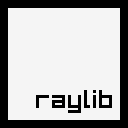This package brings Raylib to Swift.
Raylib for Swift uses Swift's C interoperability and compiler to build Raylib from source code. Just add the package as a dependency (to your swift executable package) and start making games!
On Windows and macOS you only need Swift. For Linux, see install required libraries.
1. Create a Swift package for your project.
$ cd my/projects/folder/path
$ mkdir MyGame
$ cd MyGame
$ swift package init --type executable2. Edit the newly created Package.swift to add Raylib to the dependencies array:
.package(url: "https://github.com/STREGAsGate/Raylib.git", branch: "master")On Windows and macOS you only need Swift. For linux, see install required libraries.
Note:
.branch("master")is required, you cannot use tags, commits, or versions. Swift doesn't allow unsafe build flags for specific versions and build flags are required to build Raylib, so you must use master at this time or you will get an error from SwiftPM.
3. Add the following to the static func main() in MyGame.swift.
let screenWidth: Int32 = 800
let screenHeight: Int32 = 450
Raylib.initWindow(screenWidth, screenHeight, "MyGame")
Raylib.setTargetFPS(30)
let randomColors: [Color] = [.blue, .red, .green, .yellow, .darkBlue, .maroon, .magenta]
var ballColor: Color = .maroon
var ballPosition = Vector2(x: -100, y: -100)
var previousBallPosition: Vector2
while Raylib.windowShouldClose == false {
// update
previousBallPosition = ballPosition
ballPosition = Raylib.getMousePosition()
if Raylib.isMouseButtonDown(.left) {
ballColor = randomColors.randomElement() ?? .black
}
let size = max(abs(ballPosition.x - previousBallPosition.x) + abs(ballPosition.y - previousBallPosition.y), 10)
// draw
Raylib.beginDrawing()
Raylib.clearBackground(.rayWhite)
Raylib.drawText("Hello, world!", 425, 25, 25, .darkGray)
Raylib.drawCircleV(ballPosition, size, ballColor)
Raylib.drawFPS(10, 10)
Raylib.endDrawing()
}
Raylib.closeWindow()Original Raylib global functions are now static members of the Raylib type.
Raylib.initWindow(screenWidth, screenheight, "My First Raylib Window!")It's a goal of this project to have all the global functions available on their respective types as members.
As an example Image, now has new initializers.
let image = Image(color: .green, width: 256, height: 256)Doing this for the entire API will increase discoverability and make Raylib for Swift a more Swifty experience.






